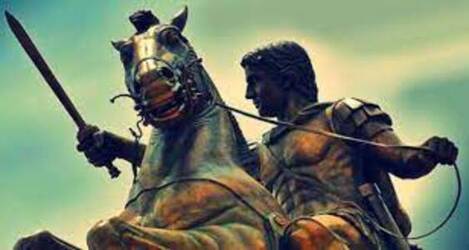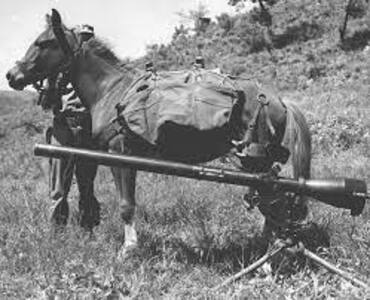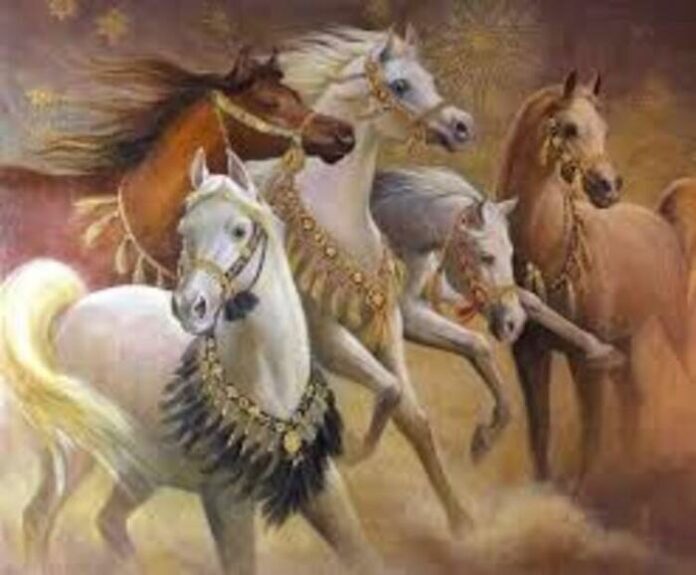History knows many famous rulers, artists, heroines and heroes. But did you know that some horses in history received very high honors and decorations and were showered with gifts? Horses are animals that are easy to love, but this is about something else..
Marengo
This light gray Arabian stallion was Napoleon Bonaparte’s most famous war horse. Although small in stature (145 cm tall), he was known for his composure and reliability. It was purchased during Napoleon’s service in the French army in Egypt in 1799, and was named after the Battle of Marengo in 1800, a major French victory over the Austrian army. Marengo faithfully served his master in many battles, and suffered as many as eight wounds without ever knocking down a rider. He survived Napoleon’s campaign in Russia, but was captured during the Battle of Waterloo and sold to an English officer. He died in 1831, at the advanced age of 38.

Comanche
Armstrong Custer is one of the most famous American military commanders, primarily remembered for the fatal campaign against a confederation of Indian tribes under the leadership of Chief Sitting Bull. After a series of tactical mistakes, Custer’s 7th Cavalry Regiment found itself in a very unfavorable position, and all members of the battalion under Custer’s command perished. Or, rather, all human members. Only one horse survived, Comanche, who was found seriously wounded by American soldiers. The horse has already recovered from being wounded several times, so after this he was retired with special honors and lived another 15 years after the battle.

Bukefal
One of the most famous horses of the ancient world, Bucephalus (Greek: Ox Head) was the horse of Alexander the Great. He is described as a large and powerful black stallion. According to legend, a horse dealer offered it to Philip II. Macedonian, Alexander’s father, for the incredibly high price of 13 talents (338 kg) of silver. Since no one was allegedly able to mount him, Filip was not interested, but 13-year-old Aleksandar managed to tame him to everyone’s surprise because he noticed that he was afraid of his own shadow, so he turned him towards the sun and then mounted him. Bucephalus served Alexander in many battles, and it is possible that he was killed in one of them. Be that as it may, later legends closely linked Alexander and Bucephalus, so that, for example, we find claims that they were born on the same day.

Sergeant Reckless
This Mongolian-bred mare was purchased from a Korean boy by US Marines from the Anti-Tank Company, 5th Regiment, 1st Marine Division. It happened at the time of the Korean War, when the nagas of North and South Korea clashed for supremacy over the Korean peninsula, with the southerners having the support of the UN, and the northerners of China and the USSR. The mare was named Reckless and soon became at home among the marines. She was especially known for eating or drinking almost anything she could – scrambled eggs, beer, Coca-Cola, even poker chips. During the war, she served carrying loads and the wounded, and she was so reliable that she could do it without the presence of a horseman. During one battle, she carried out as many as 51 deliveries of materials by herself, and she continued her service even though she was wounded twice. After the war, she was awarded the honorary rank of sergeant and several decorations.

Incitat
The most favorite horse of the infamous Roman emperor Caligula, Incitat (Latin for swift), allegedly had a marble stable, an ivory trough, purple blankets (this color was a sign of power and aristocracy in ancient Rome), and a collar made of precious stones. Caligula allegedly, at the height of his madness, had Incitatus declared a Roman citizen, and then showered him with various honors, intending to declare him consul, but he was killed before he could carry out that intention. Despite this, Incitat was remembered as a consul horse. It is worth noting that some historians believe that Caligula actually wanted to humiliate the senators with this act.



